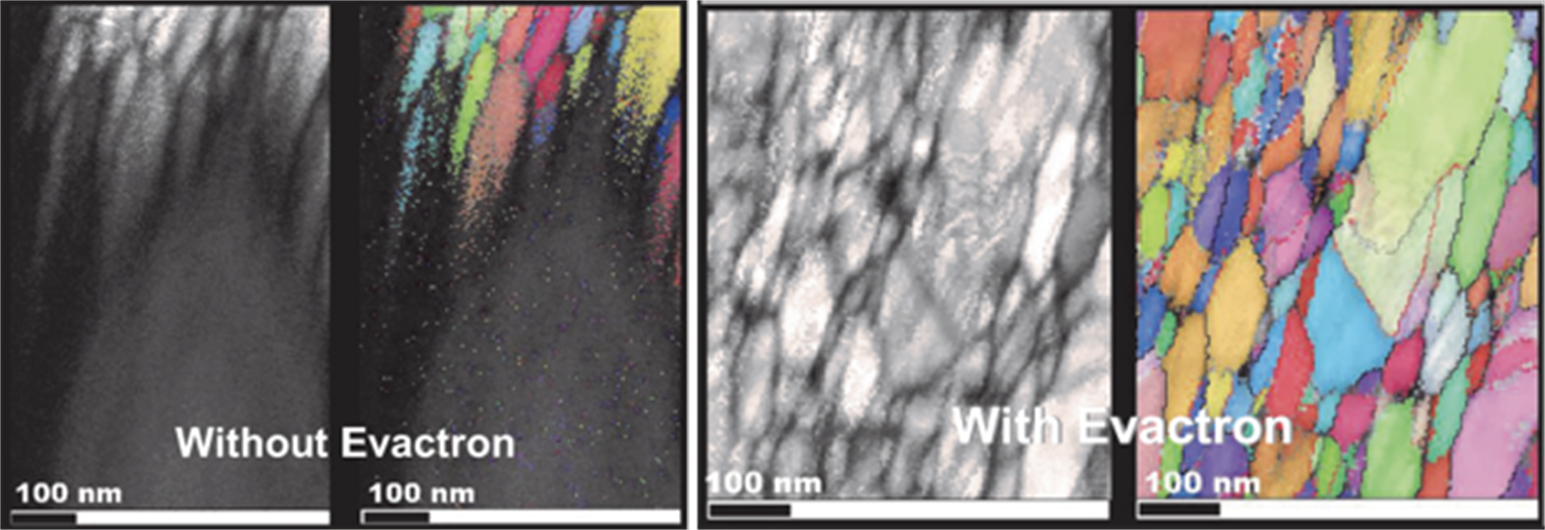The Evactron E50 De-Contaminators are compact, high performance, yet simplified plasma cleaners specifically developed for ion and electron beam instruments, such as SEMs, TEMs and FIBs.
The E50 De-Contaminator allows high power cleaning for outstanding imaging and resolution and provides enhanced probe and detector sensitivity that is normally impacted by contamination.
The Evactron E50 Plasma Radical Source (PRS) features a small-sized design, making it a universal solution for sample preparation chambers, either SEM or FIB chambers, or load locks.
The Evactron E50 De-Contaminator offers quick, robust and effective cleaning over a wide range of pressures, thereby enabling artifact-free, high quality images, as well as enhanced sample analysis efficiency.
System Features
- Plasma and UV afterglow enable dual-action cleaning
- Energy-efficient radiofrequency hollow cathode plasma (RFHC) available
- Bluetooth Android tablet or wired touchpad programming
- RF power—75 W peak, up to 50 W continuous
- Offered with recipes, programmable power, cleaning time and number of cycles
- TMP-compatible and advance venting is not required
- High-vacuum 'pop' ignition available
- PRS can be mounted on the load lock or the SEM chamber
- Push button cleaning operation available
- Enables quick cleaning that is over 100 times quicker compared to the early generation of Evactron models
- External interlock connection (optional) is available
- Complies with CE, TUV, SEMI and NRTL standards
- A wide range of pressure operations—ranges from 0.3 Pa/2 mTorr to 80 Pa/600 mTorr
- Does not harm sensitive components—no sputter etch
- Match or gas flow changes are not needed for plasma ignition
Evactron E50
The Evactron E50 plasma De-Contaminator has been combined with wireless tablet programming and has been designed to remove hydrocarbon contamination from high vacuum chambers, such as SEMs and FIBs.
The Evactron E50 Plasma De-Contaminator’s compact design houses majority of the models of load-locks and SEM and FIB chambers. The Evactron E50 makes use of air plasma and UV afterglow to rapidly decrease hydrocarbon contamination.
Specifications of Evactron E50 System
- Availability of Android tablet or Bluetooth communication package
- RF power—35 to 75 W at 13.56 MHz RFHC
- Comes with a hardware interlock
- Desktop controller fitted with push-button operation
- RoHS-compliant
- Provides 100 to 240 VAC 50/60 Hz input
- Chassis dimensions—width × height × depth = 17.2″ × 3.5″ × 8.6″ (44 × 8.9 × 22 cm)
Evactron E50 E-TC
The Evactron E50 E-TC Plasma De-Contaminator has been particularly designed for facilities that need a wired touchpad interface for programming purposes.
The touchpad, which measures 134 × 112 × 69 mm, is linked to the controller via an RS-232 cable. The simplified PRS has a compact footprint and makes use of air plasma and UV afterglow to remove hydrocarbon contamination, and hence provides immediate results.
Specifications of Evactron E50 E-TC System
- Desktop controller provided with pushbutton operation
- Hardware interlock is available
- Chassis dimensions—width × height × depth: 17.2″ × 3.5″ × 8.6″ (44 × 8.9 × 22 cm)
- Comes with tethered touchpad communication package
- RF power—35 to 75 W at 13.56 MHz RFHC
- 100 to 240 VAC 50/60 Hz input
- Plasma chemical etch plus UV active desorption
- External hollow cathode plasma radical source
- No sputter etch damage or debris
- Easy to use sample and chamber cleaning
- Plasma strikes at high vacuum, no venting required

Image Credit: Evactron (XEI Scientific)
Plasma cleaning of the sample prior to TKD experiments affords many advantages. The improvement in pattern quality and enhanced measurement efficiency is needed for extended experiments, which can include fast and multiple scans at the same sample position (e.g., for repeated in-situ heating or straining experiments). The advantage of plasma cleaning is recommended for all high resolution TKD experiments. Plasma cleaning the sample inside the microscope chamber is recommended since the chamber, detectors and the holder are cleaned simultaneously.